As a family law attorney, you know good marketing creates a strong emotional connection and makes potential clients feel that they can trust you. You’re encountering people in some of the most stressful and vulnerable situations in their lives and you need your marketing strategy to create connections at every touchpoint.
To generate new clients and cases, law firms are relying heavily on pay-per-click advertising (PPC) — and spending much of their budget on it. For family law firm marketers, however, there’s an opportunity to create an entire inbound marketing funnel that allows prospective clients to educate themselves and build trust with your firm before they ever pick up the phone.
If you’re new to law firm marketing, be sure to check out our Complete Guide to Law Firm Marketing and Advertising. There you’ll learn about the marketing funnel, different types of marketing you can use for your law firm, and how to measure success for your marketing activities.
4 Marketing Tactics for a Family Law Practice
Before we jump into the strategies that family law practices can use to build trust throughout the entire marketing funnel, let’s go over four powerful tactics you could implement today to maximize the value of your marketing spend—and ensure you’re building the best rapport from the first interaction with your potential clients.
1. Use PPC to your advantage
Pay-per-click (PPC) advertising is when your firm pays a publisher (like Google) to display ads for particular search terms. PPC advertising is important because 85% of prospective clients prefer using Google as their primary source for research when looking for a lawyer—that’s part of the reason why legal search terms are often so expensive to bid on.
For family law firms that don’t want to spend tens of thousands of dollars every month on PPC advertising, there are ways you can get value from PPC advertising without breaking the bank.
- Go local for the best ROI
One of the disadvantages of PPC is in the name—you pay for every click, whether it’s from someone in your area or someone on the other side of the globe. Google’s Local Service Ads help you create a local SEO strategy for your area by giving you top billing for searches like “family lawyer + your city.” See the example below for “family lawyer new york” and note how it shows your picture and Google Business reviews rating to help you stand out, while also making it simple to call your firm directly.
The other benefit to Local Service Ads is that you only pay for qualified leads. If someone clicks on your Local Service Ad but you’re not the right fit for the case or area, then Google doesn’t count it as a “click.” That means you’re going to spend less on a cost-per-lead basis, which is a huge win for the efficiency of your marketing.
Local Service Ads aren’t the only way to go local with PPC, though. Plus, they take extra effort on your part, with an application and vetting process, and can limit your geographic reach. By combining Local Service Ads with a localized PPC strategy you can get the best of both advertising worlds.
Boost your localized PPC strategy with Google’s ad extensions, which are modules that can make your ads stand out in a crowd and increase conversions. Great extensions to include for local PPC are the location extension, which includes your firm’s address in the ad, the sitelink extension, which allows you to include multiple pages from your site in the ad, and the call extension, which allows people to call directly by clicking on the ad.
- Refine your PPC strategy with conversation insights
One of the central tenets of a good marketing strategy is to refine based on real-world results. PPC advertising is no exception. While many people rely on insights from which ads are getting the best click-through rates or driving the most leads, smart marketers use their real-world conversations with prospective clients to refine PPC advertising.
With Conversation Intelligence from CallRail, you can record, transcribe and analyze every call that comes into your family law firm. Using artificial intelligence, Conversation Intelligence can highlight key phrases and insights from those calls. That information can help you make better PPC ad campaigns with language that resonates with your prospective clients.
Conversation Intelligence also helps you understand what’s driving people to your law firm, so you can bid on better keywords that will have a higher conversion rate. That’s not all it can do, though. We’ll talk more about using Conversation Intelligence to improve marketing below.
2. Leverage social media to attract leads
Family law firms don’t need to rely on paid advertising for their entire marketing strategy. For many prospective clients, family legal issues are extremely personal and oftentimes scary topics that they want to understand more about.
Social media is a great, often free, way to advertise your firm’s expertise and instill trust in your clients. With a smart approach to social media content, you can create effective posts in a way that’s sustainable for your small family law firm. Let’s take a look at a few efficient ways to bolster your social media game.
- Answering frequently asked questions
Anyone considering a divorce will have lots of questions about the process and your firm: What if my spouse kicks me out of my house? How does this affect my taxes? How can I settle this out of court? What is collaborative divorce? Will you help me mediate rather than go to trial? Have you negotiated financial support and settlements before?
These questions, and many more, make great written or video content for social media posts. Not only are answering these questions a way for you to show your expertise, but it’s a way for you to display your empathy towards prospective clients as they search for important information.
- Repurposing your SEO content
If you’ve written any content for search engine optimization (SEO) marketing—blog posts, ebooks, infographics—you’ve got a great library to pull from for your social media accounts.
Use your lighter content like blogs and lists in social media posts to get click-throughs to your site. More valuable content, like a guide to the divorce process, can be gated to help you generate leads more quickly.
While much of your SEO content is likely word-based, pair it with strong visuals or use video formats to increase engagement. Recapping a blog post or answering an FAQ in a quick video captured on your phone is valuable content that social media sites like Facebook, Instagram, and TikTok will be more likely to promote on people’s feeds organically than words alone.
- Build your YouTube channel (and fuel your other content)
Social media content creation can help you build a self-sustaining content engine in no time, and YouTube plays a key part in it since you want to ensure your content includes videos and written assets.
As you answer those FAQs and create topic-based videos on social media, repurpose that content for YouTube by posting it there as well. Even simple videos recorded on your camera can become high-performing videos for your channel with the right strategy.
Once you’ve uploaded a new video to YouTube, you can then create a transcript of your video, and with that transcript you can create a blog post. Can you see where this is going? That blog post then becomes a social media post, and you can use the responses to that social media post to create another video response…and on and on the content engine runs.
What’s important to remember for your social media content strategy is that you’re providing valuable information to your prospects and clients in an empathetic, trustworthy way.
3. Know which marketing is making your phone ring
The thing about marketing family law practices is that you don’t have time (or money) to waste on ineffective marketing strategies. You want to know as soon as possible which campaigns are driving engaged leads and which aren’t.
One of the most effective things any family law firm can do to create an efficient marketing strategy is to connect their digital marketing with their phone calls. Because phone calls are so important to converting prospects into clients, knowing which ad campaigns got a person to call your firm gives you instant insight into why they’re calling. This allows you to have a productive and empathetic call right away. It also allows you to refine your digital marketing efforts based on conversion metrics, instead of just clicks or impressions.
That’s exactly what JC Law did by leveraging CallRail and Hubspot. By analyzing actual calls that came through on CallRail’s Call Tracking against converted contacts in Hubspot, JC Law was able to optimize their ad spend so much that they shaved 20% off their annual marketing budget while improving on their previous new client counts. By connecting the calls to digital marketing efforts, JC Law made their marketing significantly more effective.
4. Use insights from day to day conversations to drive marketing campaigns
Every call you take with a prospect or client is an opportunity to learn, but you can’t be on every call or analyze them all to find the trends. That’s where CallRail’s Conversation Intelligence can step in to give your marketing a boost.
Conversation Intelligence transcribes your calls and uses AI to analyze what’s being said, giving you insights to the topics and language your customers are actually using when they call about their family law inquiries. Not only can these insights improve your PPC keyword bidding and ad copy, but you can use it to create better content, more inspired web page copy, and prepare staff for handling common questions.
When you use insights from calls in these ways, you can create a more efficient and empathetic approach to marketing your family law firm.
Marketing strategies to build trust in your prospective family law clients
It can be hard under the best circumstances to create a comprehensive marketing funnel that builds awareness in your audience, helps them consider their options, and ultimately converts them into leads. But family law marketers have to raise the bar to another level in their marketing efforts in order to build needed trust with prospective clients.
Let’s explore the strategies you can adopt throughout the marketing funnel to deliver the best experience for your prospective clients while generating meaningful engagement and leads for your business.
Attract leads from paid and organic search with direct, clear keywords
The first touch at the top of the funnel needs to be approachable and designed for lay audiences. For those leads unfamiliar with legalese (i.e., almost all of your audience), being able to make sense of your family law marketing content is essential.
Use direct, plain English keywords in your paid and organic search content with leads. As a starting point, use “child custody,” “divorce,” and “separation” as keywords and all variants, pairing each with “attorney,” “lawyer,” or “law firm.” From there, add local keywords to these phrases to attract leads generated from your area:
How you refer to your services will always differ from how your leads refer to them. The base service terms above act as your keyword list foundation, but they likely will not fully reflect how your leads refer to their issues. Identifying question phrases and common-language ways of referring to particular legal services will build on this foundation and speak to more of your audience.
To source question phrases, simply check out the “People also ask” section and related questions on Google searches:
A few great keyword research tools, if you don't already use them, are SEMrush, Ahrefs, and Moz. CallRail's Automation Rules tool can surface common keyword themes or phrases from existing calls with leads.
Once you have the keywords you’d like to use in your marketing campaigns, place them in your PPC ad copy and organic SEO content. Consider using ad extensions on your PPC ads to share further details about your company’s awards, link to helpful supplementary pages on your website, and position your firm against others.
Check out this example PPC ad with direct language with comforting phrases like “see beyond challenges to find solutions” and “win the cases that other firms won’t even take on”:
And here’s a good example used on a practice area page, after clicking the link to “family law” on the ad above, talking about divorce services. This copy is empowering, collaborative, and, most importantly, the call-to-action (CTA) is communicating that the attorneys will listen and win for their clients.
Further down the same page is where we get all the keyword-rich copy (keywords underlined in blue):
(Source)
Plan for the long game by marketing to your audience from a place of compassion and emotional connection. In the realm of PPC ads and content, this is based on direct, plain English keywords and phrases. This clarity should come through from the very first moment, starting with the PPC ads and content you’re organically ranking for.
→ Pro tip:
If you're driving leads to a landing page through search, then capture email addresses at this stage with a form or pop-up. Lead with value to earn their trust in handing over their email, and step up to their high expectations through the crucial lead-fostering process.
Foster leads through useful, helpful SEO content
After the first brand touchpoint of PPC ads or organic search results, focus on publishing content on your site and third-party sites that help leads navigate family law issues and evaluate your services.
Using your site to build trust with prospects
Information sharing should be your main goal at this stage. What questions do your leads need answered to feel comfortable working with your firm?
One medium for sharing educational content is through blog posts. Targeted blog posts that address frequently asked questions give leads a complete picture of your expertise. These blog posts can also shed light on questions leads don’t even think to ask. For example, “questions to ask your child custody lawyer” and “how much does it cost to get a divorce?” To get started creating useful blog posts on your law firm site, check out this resource for tips.
Another way to help leads navigate their challenges is to publish practice area pages. Notably, this is different than a “services” page that lists all the different services you offer. Instead, these practice area pages, ideally 1,000 words or longer, build trust in your offerings by speaking to your lead’s questions and concerns about a specific area of family law. They also have the added benefit of doing the heavy lifting in educating your leads before you even start having sales conversations with them.
Here’s an example of a services page that rounds up dozens of practice area pages, allowing the lead to quickly navigate to their area of interest. Each of the bullet points is clickable:
Share content that leads find relevant and useful to forge an advisor/client relationship while marketing to the audience effectively.
→Pro tip: CTAs on blog posts and practice area pages should be clear and respectful of your lead’s customer journey stage. Remember, many of your prospective clients are going through a tough time in their lives. They might not be ready for, or are wary of, submitting for a quote or consultation. Steer away from compromising trust through salesy CTAs like “schedule a call” or “receive a quote.” Think: “schedule a consultative meeting with an expert,” “free strategy call,” “read more divorce resources here,” etc.
Using third-party sites to build trust with your prospects
The content you put out on your own site and social media should always be on-brand and on-message. But your clients aren’t just going to choose you based on what you have to say alone. Clients want to see independent validation or social proof of your law firm’s claims. One study found that 84% of prospective clients would only work with a law firm that was rated above four stars on review sites.
Reputation management on third-party sites
Law firms need to practice reputation management online, and third-party referral sites are some of the most important channels for your brand. Reputation management in the legal context is the process of monitoring how prospective and actual clients perceive your firm and taking action when necessary to improve your brand’s image—whether those hits come from bad reviews, social media posts, or Google search results.
Reputation management requires you to do a deep dive into the conversations taking place around your brand online. Look at sites where you have reviews—Google, Yelp, Avvo, etc.--and examine for negative reviews. Then search your family law firm’s name on Google and social media sites to see what comes up and what may be concerning. If this is too much, there are reputation management tools that can automate this monitoring for a nominal fee each month.
After you’ve audited your content, assessed for damage, and taken action, it’s time to take more control of third-party site listings.
Google Business Profile
Up until July 2022, Google My Business was the name of the app and interface businesses used to control their profiles on Google. Now, that has been changed to Google Business Profiles, and instead of a dedicated app, any changes to your business can be managed through the Google Maps and Google Search apps.
To get started, you can complete your Google Business Profile listing to help improve your local SEO and create a more welcoming view of your firm in search results. As you can see in the image below, the Google Business listing allows you to provide a ton of information in a short amount of time—including location, images, phone number, services, answers to common questions, and reviews.
Claiming and managing your Google Business Profile is key to providing the best experience for anyone who searches for your family law firm. Incomplete or incorrect information here can be a huge source of frustration and may ultimately drive prospective clients to another firm.
Referral sites for your family law firm
Google isn’t the only place people turn to for insights about your business. Referral and review sites like Avvo and Yelp are important sources of validation for your prospective clients who want to hear directly from your past and current clients.
Create your profile and take ownership of listings on these and other referral sites. Not only will it help you better protect your brand’s reputation, but you can respond to both positive and negative content to show you’re an engaged and sympathetic law firm that cares about their client’s experiences—both bad and good.
With a little time and a lot of patience, you can improve your brand’s presence on third-party sites.
→Pro tip
Track which referral sites your leads are using by asking them in your phone screening or on forms. Remind satisfied clients to leave reviews on the most frequented referral sites to help drive your ratings up and get positive testimonials that will help prospective clients connect with your law firm.
Reach out consistently to show leads you’re there to help
Part of what builds trust is reliability. Regularly connect with leads (you’ve already collected their emails from Step #1!) to keep your firm top of mind and reinforce that your firm could be useful to them.
One ideal way to go about this is through an email newsletter, either bi-monthly or monthly. The key guiding principle for entering your leads’ inboxes is to be overwhelmingly helpful, with loads of value. This demonstrates initiative and opens up your brand as a source of trusted knowledge for your leads.
Use email newsletters to share helpful content from Step #2 with your leads that they may not have read. Think of it as a “people also read” recommendation at the base of a news article to inform your leads about questions they could have or issues they may face in the future.
Bring value and compassion forward with these ideas to your law firm email newsletter:
- Answer questions like “What are the steps to getting a divorce?” “What should I be thinking about with respect to my kids when thinking about a move?” “How will my job change affect my child custody payments?” that extend beyond a discussion of your services.
- Complete their education with guides on “all you need to know about getting a divorce” if you know they’ve indicated an interest in the topic. This means creating more comprehensive content than just services pages or landing pages from ads.
- Put a photo of the “face” of the firm in the signature line of the email. This is a prime opportunity to humanize the brand and introduce yourself in a subtle but impactful way.
Track the results of your family law marketing with CallRail
We’ve said it before, but we’ll say it again: when it comes to marketing, measurement is crucial to ensure you’re hitting the right notes with your prospective client base.
CallRail hosts a suite of tools to give you the needed eyes and ears on your marketing campaigns to win new business. Call and form tracking keep an eye on and create reports of overall performance or various A/B tests on ads. This tracking is essential to understanding what resonates with your audience and what’s actually successful in winning clients.
Your clients trust you as their family lawyer, and thousands of lawyers trust CallRail with their call and form tracking. If you’re curious about how other attorneys work with CallRail on family law marketing, find more case studies and use cases of our attorney clients here.




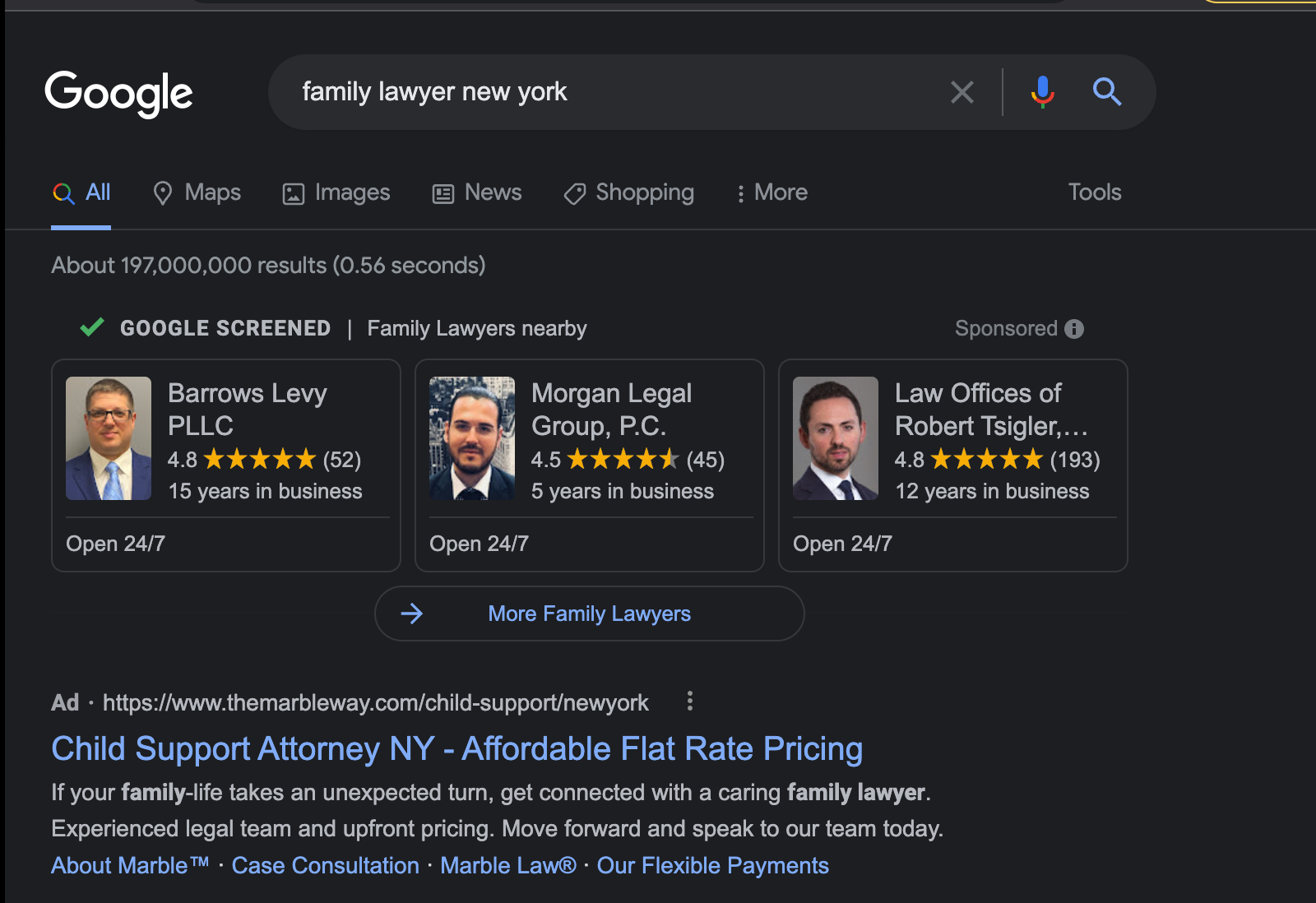



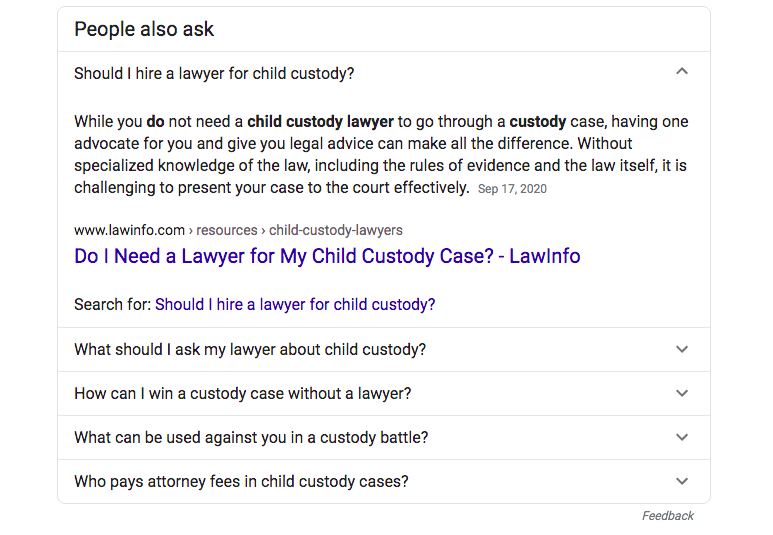


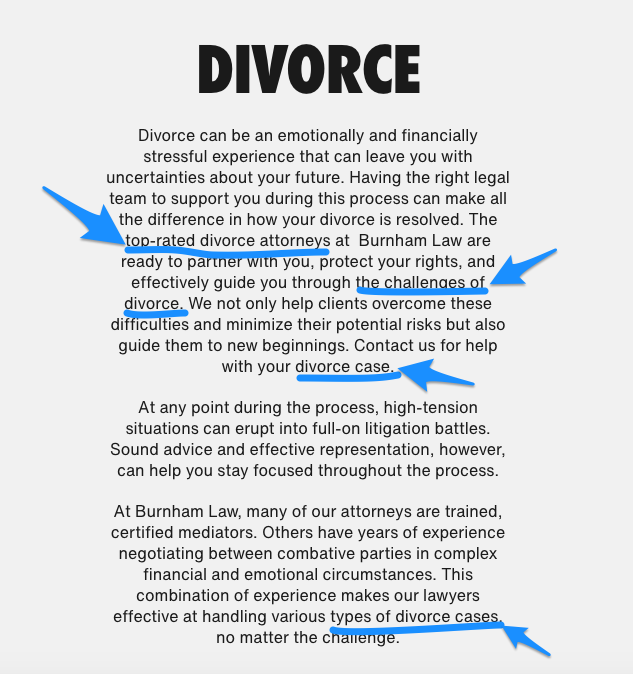
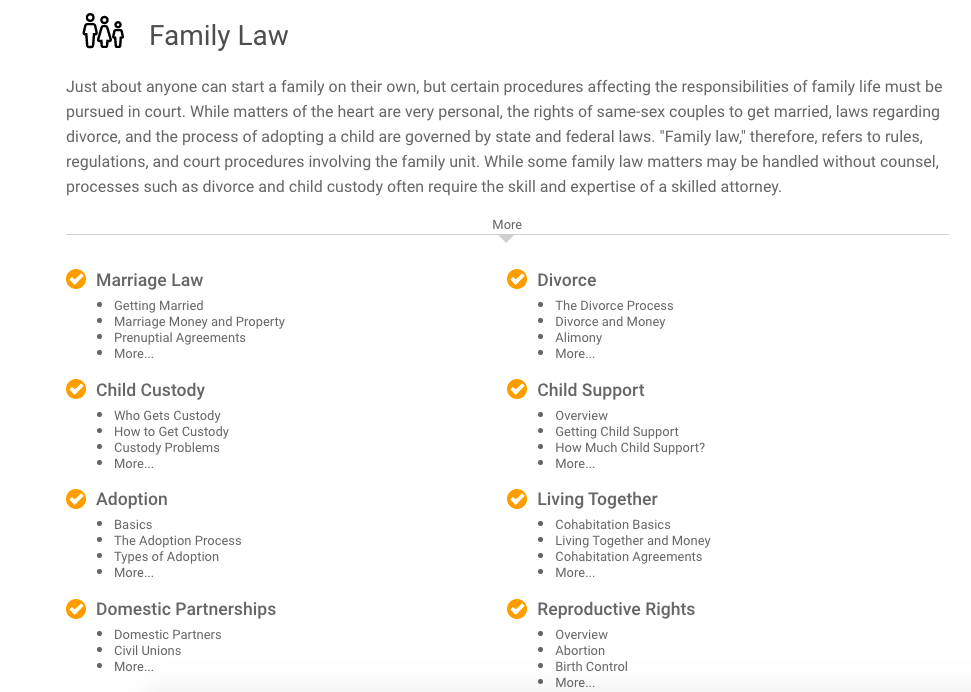
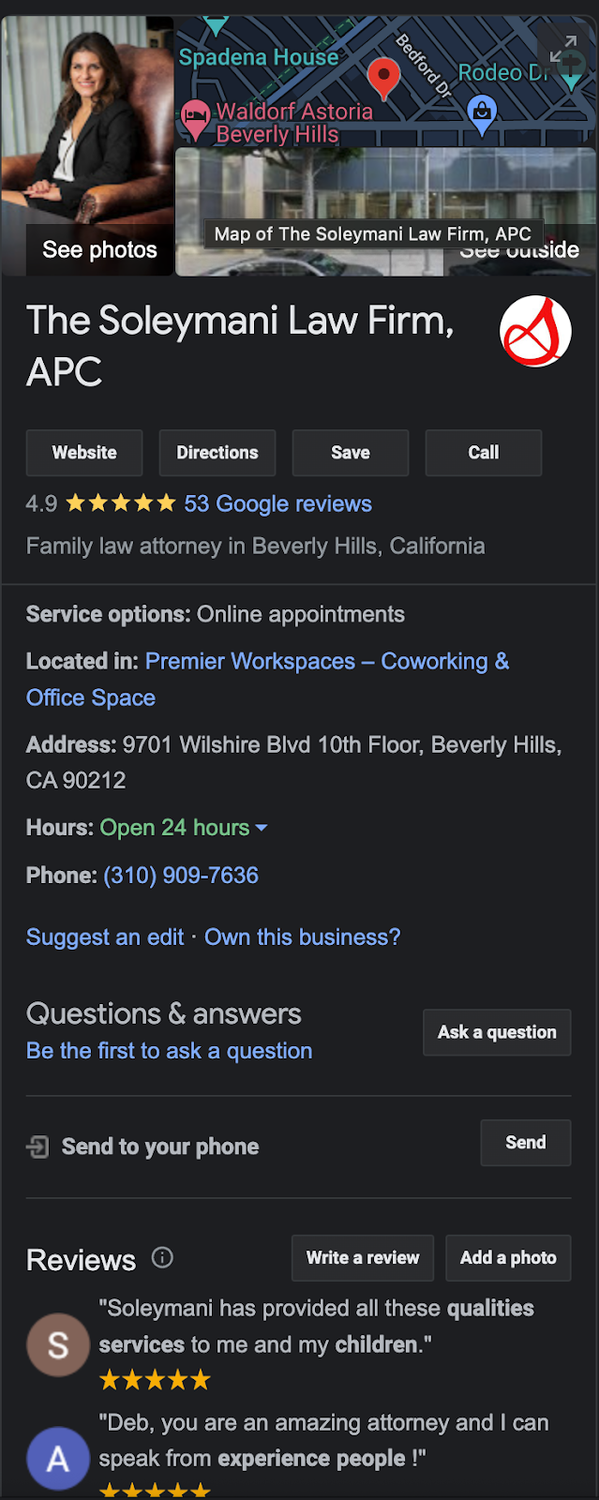
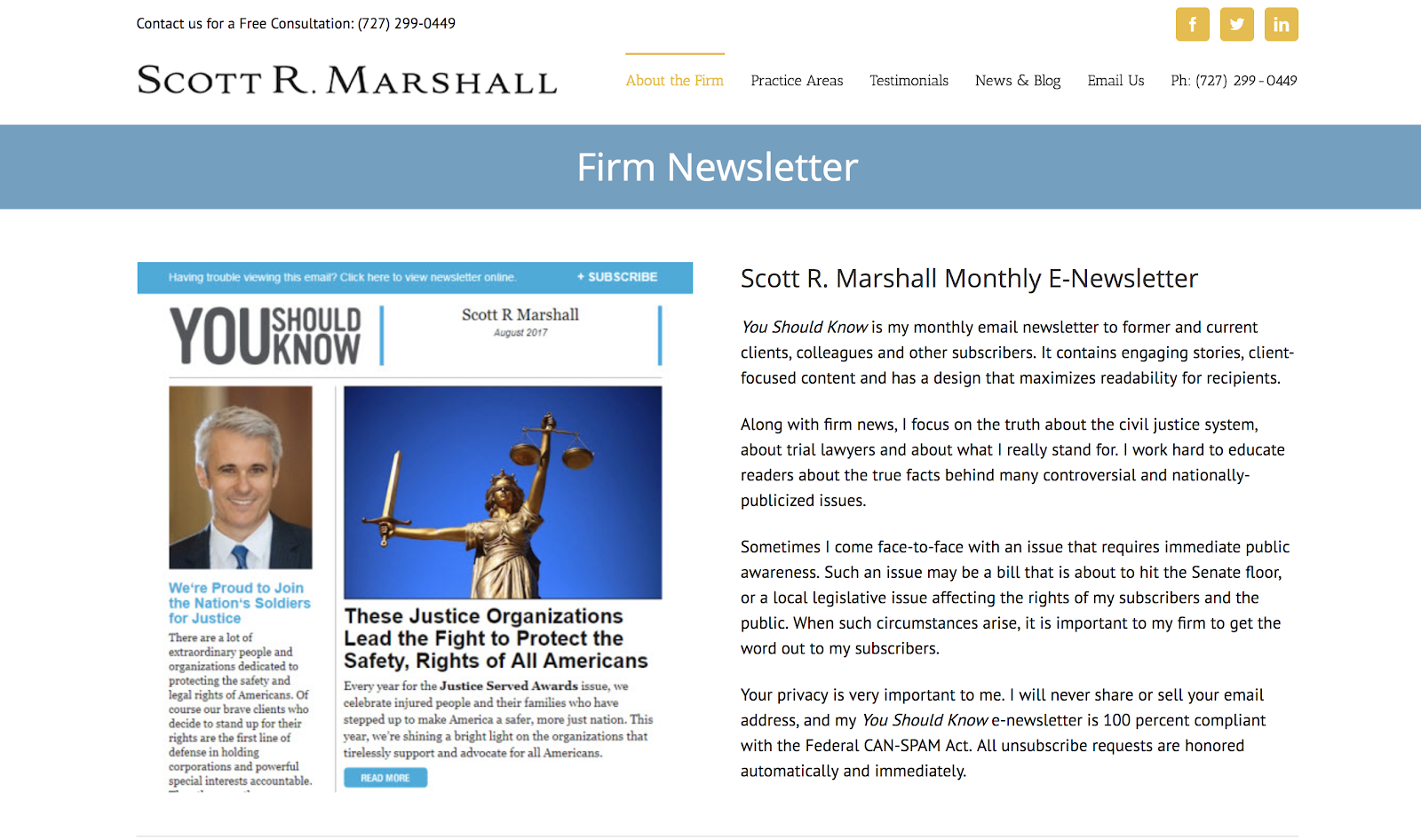
















%22%2C%22Id%22%3A%2233%22%7D%2C%22Var%22%3A%7B%22Name%22%3A%22Website%22%2C%22Id%22%3A%221%22%7D%2C%22U%22%3A%22DBBBA8FDCDA656E81CC66A7290DE99F03%22%7D%2C%7B%22Exp%22%3A%7B%22Name%22%3A%22Signups%22%2C%22Id%22%3A%2242%22%7D%2C%22Var%22%3A%7B%22Name%22%3A%22Website%22%2C%22Id%22%3A%221%22%7D%2C%22U%22%3A%22DBBBA8FDCDA656E81CC66A7290DE99F03%22%7D%2C%7B%22Exp%22%3A%7B%22Name%22%3A%22Homepage%20Trial%20Clicks%22%2C%22Id%22%3A%2284%22%7D%2C%22Var%22%3A%7B%22Name%22%3A%22Website%22%2C%22Id%22%3A%221%22%7D%2C%22U%22%3A%22DBBBA8FDCDA656E81CC66A7290DE99F03%22%7D%2C%7B%22Exp%22%3A%7B%22Name%22%3A%22Sitewide%20Trial%20Clicks%22%2C%22Id%22%3A%2285%22%7D%2C%22Var%22%3A%7B%22Name%22%3A%22Website%22%2C%22Id%22%3A%221%22%7D%2C%22U%22%3A%22DBBBA8FDCDA656E81CC66A7290DE99F03%22%7D%2C%7B%22Exp%22%3A%7B%22Name%22%3A%22Pricing%20Trial%20Clicks%22%2C%22Id%22%3A%2286%22%7D%2C%22Var%22%3A%7B%22Name%22%3A%22Website%22%2C%22Id%22%3A%221%22%7D%2C%22U%22%3A%22DBBBA8FDCDA656E81CC66A7290DE99F03%22%7D%5D%7D&_biz_u=fbd9896c2d7c483592a45c7292380564&_biz_l=https%3A%2F%2Fwww.callrail.com%2Fblog%2Fbuilding-trust-family-law-marketing&_biz_t=1744150328970&_biz_i=null&_biz_n=10&rnd=516464&cdn_o=a&_biz_z=1744150328971)
%22%2C%22Id%22%3A%2232%22%7D%2C%22Var%22%3A%7B%22Name%22%3A%22Website%22%2C%22Id%22%3A%221%22%7D%2C%22U%22%3A%22DBBBA8FDCDA656E81CC66A7290DE99F03%22%7D%2C%7B%22Exp%22%3A%7B%22Name%22%3A%22Clicks%20start%20free%20trial%20(home%20page)%22%2C%22Id%22%3A%2233%22%7D%2C%22Var%22%3A%7B%22Name%22%3A%22Website%22%2C%22Id%22%3A%221%22%7D%2C%22U%22%3A%22DBBBA8FDCDA656E81CC66A7290DE99F03%22%7D%2C%7B%22Exp%22%3A%7B%22Name%22%3A%22Signups%22%2C%22Id%22%3A%2242%22%7D%2C%22Var%22%3A%7B%22Name%22%3A%22Website%22%2C%22Id%22%3A%221%22%7D%2C%22U%22%3A%22DBBBA8FDCDA656E81CC66A7290DE99F03%22%7D%2C%7B%22Exp%22%3A%7B%22Name%22%3A%22Homepage%20Trial%20Clicks%22%2C%22Id%22%3A%2284%22%7D%2C%22Var%22%3A%7B%22Name%22%3A%22Website%22%2C%22Id%22%3A%221%22%7D%2C%22U%22%3A%22DBBBA8FDCDA656E81CC66A7290DE99F03%22%7D%2C%7B%22Exp%22%3A%7B%22Name%22%3A%22Sitewide%20Trial%20Clicks%22%2C%22Id%22%3A%2285%22%7D%2C%22Var%22%3A%7B%22Name%22%3A%22Website%22%2C%22Id%22%3A%221%22%7D%2C%22U%22%3A%22DBBBA8FDCDA656E81CC66A7290DE99F03%22%7D%2C%7B%22Exp%22%3A%7B%22Name%22%3A%22Pricing%20Trial%20Clicks%22%2C%22Id%22%3A%2286%22%7D%2C%22Var%22%3A%7B%22Name%22%3A%22Website%22%2C%22Id%22%3A%221%22%7D%2C%22U%22%3A%22DBBBA8FDCDA656E81CC66A7290DE99F03%22%7D%5D%7D&_biz_u=fbd9896c2d7c483592a45c7292380564&_biz_l=https%3A%2F%2Fwww.callrail.com%2Fblog%2Fbuilding-trust-family-law-marketing&_biz_t=1744150328975&_biz_i=null&_biz_n=11&rnd=110912&cdn_o=a&_biz_z=1744150328976)
%22%2C%22Id%22%3A%2232%22%7D%2C%22Var%22%3A%7B%22Name%22%3A%22Website%22%2C%22Id%22%3A%221%22%7D%2C%22U%22%3A%22DBBBA8FDCDA656E81CC66A7290DE99F03%22%7D%2C%7B%22Exp%22%3A%7B%22Name%22%3A%22Clicks%20start%20free%20trial%20(home%20page)%22%2C%22Id%22%3A%2233%22%7D%2C%22Var%22%3A%7B%22Name%22%3A%22Website%22%2C%22Id%22%3A%221%22%7D%2C%22U%22%3A%22DBBBA8FDCDA656E81CC66A7290DE99F03%22%7D%2C%7B%22Exp%22%3A%7B%22Name%22%3A%22Signups%22%2C%22Id%22%3A%2242%22%7D%2C%22Var%22%3A%7B%22Name%22%3A%22Website%22%2C%22Id%22%3A%221%22%7D%2C%22U%22%3A%22DBBBA8FDCDA656E81CC66A7290DE99F03%22%7D%2C%7B%22Exp%22%3A%7B%22Name%22%3A%22Homepage%20Trial%20Clicks%22%2C%22Id%22%3A%2284%22%7D%2C%22Var%22%3A%7B%22Name%22%3A%22Website%22%2C%22Id%22%3A%221%22%7D%2C%22U%22%3A%22DBBBA8FDCDA656E81CC66A7290DE99F03%22%7D%2C%7B%22Exp%22%3A%7B%22Name%22%3A%22Sitewide%20Trial%20Clicks%22%2C%22Id%22%3A%2285%22%7D%2C%22Var%22%3A%7B%22Name%22%3A%22Website%22%2C%22Id%22%3A%221%22%7D%2C%22U%22%3A%22DBBBA8FDCDA656E81CC66A7290DE99F03%22%7D%2C%7B%22Exp%22%3A%7B%22Name%22%3A%22Pricing%20Trial%20Clicks%22%2C%22Id%22%3A%2286%22%7D%2C%22Var%22%3A%7B%22Name%22%3A%22Website%22%2C%22Id%22%3A%221%22%7D%2C%22U%22%3A%22DBBBA8FDCDA656E81CC66A7290DE99F03%22%7D%5D%7D&_biz_u=fbd9896c2d7c483592a45c7292380564&_biz_l=https%3A%2F%2Fwww.callrail.com%2Fblog%2Fbuilding-trust-family-law-marketing&_biz_t=1744150328979&_biz_i=null&_biz_n=12&rnd=790948&cdn_o=a&_biz_z=1744150328979)
%22%2C%22Id%22%3A%2232%22%7D%2C%22Var%22%3A%7B%22Name%22%3A%22Website%22%2C%22Id%22%3A%221%22%7D%2C%22U%22%3A%22DBBBA8FDCDA656E81CC66A7290DE99F03%22%7D%2C%7B%22Exp%22%3A%7B%22Name%22%3A%22Clicks%20start%20free%20trial%20(home%20page)%22%2C%22Id%22%3A%2233%22%7D%2C%22Var%22%3A%7B%22Name%22%3A%22Website%22%2C%22Id%22%3A%221%22%7D%2C%22U%22%3A%22DBBBA8FDCDA656E81CC66A7290DE99F03%22%7D%2C%7B%22Exp%22%3A%7B%22Name%22%3A%22Signups%22%2C%22Id%22%3A%2242%22%7D%2C%22Var%22%3A%7B%22Name%22%3A%22Website%22%2C%22Id%22%3A%221%22%7D%2C%22U%22%3A%22DBBBA8FDCDA656E81CC66A7290DE99F03%22%7D%2C%7B%22Exp%22%3A%7B%22Name%22%3A%22Homepage%20Trial%20Clicks%22%2C%22Id%22%3A%2284%22%7D%2C%22Var%22%3A%7B%22Name%22%3A%22Website%22%2C%22Id%22%3A%221%22%7D%2C%22U%22%3A%22DBBBA8FDCDA656E81CC66A7290DE99F03%22%7D%2C%7B%22Exp%22%3A%7B%22Name%22%3A%22Sitewide%20Trial%20Clicks%22%2C%22Id%22%3A%2285%22%7D%2C%22Var%22%3A%7B%22Name%22%3A%22Website%22%2C%22Id%22%3A%221%22%7D%2C%22U%22%3A%22DBBBA8FDCDA656E81CC66A7290DE99F03%22%7D%2C%7B%22Exp%22%3A%7B%22Name%22%3A%22Pricing%20Trial%20Clicks%22%2C%22Id%22%3A%2286%22%7D%2C%22Var%22%3A%7B%22Name%22%3A%22Website%22%2C%22Id%22%3A%221%22%7D%2C%22U%22%3A%22DBBBA8FDCDA656E81CC66A7290DE99F03%22%7D%5D%7D&_biz_u=fbd9896c2d7c483592a45c7292380564&_biz_l=https%3A%2F%2Fwww.callrail.com%2Fblog%2Fbuilding-trust-family-law-marketing&_biz_t=1744150328985&_biz_i=null&_biz_n=13&rnd=346295&cdn_o=a&_biz_z=1744150328985)